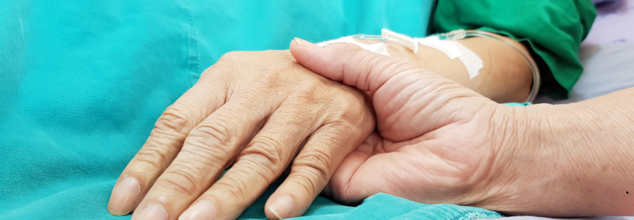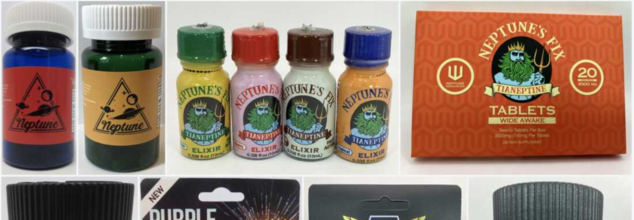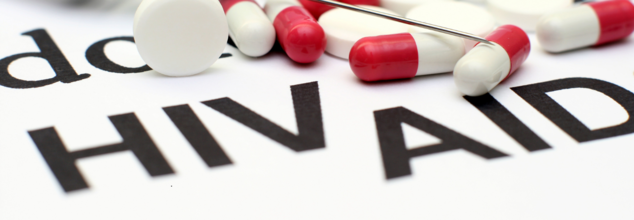- Health Conditions A-Z
- Health & Wellness
- Nutrition
- Fitness
- Health News
- Ayurveda
- Videos
- Medicine A-Z
- Parenting
- Web Stories
Health Ministry's New Guidelines On Passive Euthanasia: What It Does To Your Body?

Credits: Canva
The much-debatable topic of Euthanasia has some development. The Union Health Ministry has released new guidelines which point out four conditions for passive euthanasia.
What Is Euthanasia?
It is an act of ending a patient's life to limit the patient's suffering. Here, a patient would be a terminally ill person or someone who is experiencing great pain or suffering.
The word euthanasia comes from the Greek words "ey" good and "Thanatos" death. The idea behind euthanasia comes from the idea of a dignified death that condemns someone to a slow, painful, or undignified death.
Types Of Euthanasia
Active Euthanasia: Where a patient is injected with a lethal dose of the drug, also known as "aggressive" euthanasia.
Passive Euthanasia: Where the patient's artificial life support such as a ventilator or feeding tube is withheld.
Voluntary Euthanasia: This happens when the patient consents to it.
Involuntary Euthanasia: Happens when the patient is not in the state to consent to euthanasia. In such cases, the patient's family makes the decision.
What Does Euthanasia Does To Your Body?
Active Euthanasia is done by giving a fatal dose of sleeping drug or a lethal drug is injected. After the patient is given a local anesthetic, Lidocaine is administered, followed by an intravenous injection or a coma inducing drug. After the person falls into a coma, an injection of Rocuronium bromide is given that paralyses all muscles including the ones used to breathe. Shortly after this injection, the patient is declared dead. These steps are as per the Dutch guidelines of active Euthanasia.
New Guidelines
The Union Health Minister however has released the guidelines for passive euthanasia for taking a "considered decision in a patient's best interests, to stop or discontinue ongoing life support in a terminally ill disease that is no longer likely to benefit the patient or is likely to harm in terms of causing suffering and loss of dignity."
The guidelines lays down the conditions of the individual who has been declared brainstem death, if the patient won't benefit from any therapeutic interventions, patient/surrogate documented informed refusal, following prognostic awareness, to continue life support and compliance with procedure as prescribed by the Supreme Court.
The 'Draft Guidelines for Withdrawal of Life Support in Terminally Ill Patients' also states that doctors should make a considered decision to not start life supporting measures in a terminally ill patient that is unlikely to benefit the patient and is likely to lead to suffering and loss of dignity.
Gas Station Heroin: What Is The Dangerous 'Cognitive Supplement' Experts Are Warning About?

Credits: FDA
In recent months, a wave of concern has rippled through the U.S. public health community over a so-called “cognitive supplement” that’s been quietly—and dangerously slipping into the hands of consumers. Marketed with appealing names and colorful packaging, often sold at gas stations, smoke shops, and corner stores, these energy-boosting elixirs and mood enhancers are anything but benign. They contain tianeptine, an unapproved drug in the United States that’s quickly earning notoriety under the alarming nickname “gas station heroin.”
With a growing number of emergency calls, FDA warnings, and unregulated formulations circulating under the radar, tianeptine has become a chemical wildcard posing significant risks to public health while masquerading as an over-the-counter supplement.
What Is Tianeptine?
Tianeptine is a tricyclic antidepressant originally developed and approved for use in several European, Asian, and Latin American countries to treat conditions like major depressive disorder, anxiety, and even irritable bowel syndrome. Despite these approved medical uses abroad, tianeptine has never received approval from the U.S. Food and Drug Administration (FDA) for any therapeutic purpose.
What’s particularly alarming is the way this compound is being sold in the U.S.—not as a regulated pharmaceutical, but as an unregulated cognitive enhancer or energy booster, available under brand names such as Zaza, Tianna, Pegasus, TD Red, and Neptune’s Fix. These products are packaged to resemble energy drinks or wellness shots, creating a false sense of safety for unsuspecting buyers.
How Tianeptine Is Slipping Through the Regulatory Cracks
Tianeptine’s entry into the U.S. market exploits a regulatory loophole. The FDA doesn’t preapprove ingredients used in supplements before they hit store shelves. As a result, many companies are selling tianeptine-based products under the guise of dietary supplements, despite explicit warnings from the FDA stating that tianeptine cannot legally be added to food, beverages, or supplements.
“It’s kind of this grey area of consumer products,” explains Dr. Diane Calello, medical director of the New Jersey Poison Information and Education System. “These products are not tested or regulated in the same way that medications are.”
This grey area is not without consequences. A recent study led by Calello documented a cluster of emergency cases in New Jersey, where individuals experienced symptoms such as rapid heartbeat, seizures, and low blood pressure after consuming a tianeptine-laced beverage called Neptune’s Fix. Of the 20 patients, more than half were admitted to intensive care units.
Why Are People Using Gas Station Heroin?
Tianeptine’s appeal lies in its opioid-like effects, even though it is not classified as an opioid. The drug interacts with mu-opioid receptors in the brain, producing short-term euphoria, pain relief, and mood elevation. These effects are similar to those of controlled narcotics like oxycodone—but without the same legal restrictions.
Some products claim, without clinical backing, that tianeptine can treat addiction, anxiety, depression, and even sexual dysfunction. In 2018, the FDA issued a warning letter to the makers of Tianna, a supplement that claimed to offer a solution to opioid cravings—another red flag in a market already marred by misinformation.
But the pursuit of relief comes at a price. Many users increase their dosage over time, either to self-treat withdrawal symptoms or to chase a high. High doses can cause severe respiratory depression, the same life-threatening condition caused by opioid overdoses. And unlike regulated medications, there’s no standardization in these products, making them even more dangerous.
What are The Risks And Side Effects of Using Tianeptine?
Even in small doses, tianeptine is not without risk. Reported side effects include:
- Nausea and vomiting
- Dizziness and drowsiness
- Constipation
- Abdominal discomfort
- Bad dreams
- Headaches
- Dry mouth
However, when misused or taken in large amounts—especially in combination with substances like alcohol, opioids, or stimulants—tianeptine can lead to cardiac arrest, seizures, or even death.
Moreover, regular users may find themselves battling withdrawal symptoms similar to those experienced during opioid withdrawal. These can include:
- Agitation and anxiety
- Muscle pain and sweating
- Depression
- Chills and trembling
Withdrawal begins quickly and can be intense, reinforcing the cycle of dependence.
The FDA and U.S. poison control centers have issued repeated alerts, cautioning the public and health professionals about the growing number of adverse events linked to tianeptine.
Last month, the FDA took a firmer stance, warning healthcare providers about “the magnitude of the underlying danger of these products.” Poison control centers across the country have seen a steady uptick in calls involving tianeptine-related overdoses, particularly among individuals with a history of substance use or mental health issues.
Despite these warnings, tianeptine remains accessible in many gas stations and smoke shops, often labeled misleadingly as a natural mood enhancer or energy booster. This underscores the need for stronger regulations and consumer awareness campaigns.
If you or someone you know is experiencing depression, anxiety, addiction, or chronic pain, consult a licensed medical professional for FDA-approved treatments. There are safe and effective therapies available—including medications and cognitive behavioral therapy—that have been rigorously tested and regulated.
Avoid purchasing any so-called “cognitive supplements” or energy drinks from gas stations or smoke shops, especially those that are vaguely labeled or make unverified medical claims.
If you suspect someone is experiencing an overdose or withdrawal from tianeptine, contact emergency medical services immediately.
What’s marketed as a quick fix in a flashy bottle may actually be a dangerous and addictive drug. As the story of gas station heroin unfolds, it’s clear that consumers need to be vigilant, and regulators must act faster to protect public health.
Ending AIDS By 2030 Now Less Likely Due To U.S. Cuts, Says UNAIDS

Credits: Canva
The global ambition to end AIDS as a public health threat by 2030 is now more uncertain than ever. Winnie Byanyima, Executive Director of UNAIDS, has warned that funding cuts introduced under former U.S. President Donald Trump will further derail progress on HIV/AIDS prevention and treatment. Speaking to journalists in Johannesburg, South Africa, Byanyima described the situation as “already off track,” citing the latest data that showed 1.3 million new HIV infections worldwide in 2023.
South Africa, which has the highest number of people living with HIV—around 8 million—was the backdrop for Byanyima's meeting with President Cyril Ramaphosa. Their discussion focused on how to sustain Africa’s HIV/AIDS response in light of major reductions in U.S. foreign aid, historically one of the region’s largest funding sources.
Ripple Effects Across Africa
Byanyima expressed concern over the growing impact of the funding cuts, particularly on local health systems. “Less funding means we will get more and more off-track,” she said, noting that the exact consequences remain to be seen. However, early signs are troubling: several countries have reported a decline in the number of people visiting clinics.
Previously, prevention programmes supported by foreign aid—especially those funded through the U.S. President’s Emergency Plan for AIDS Relief (PEPFAR)—had helped bring down infection rates. But the rate of decline wasn’t fast enough, Byanyima explained. With reduced funding now shuttering community clinics across Africa, she warned that infection rates could begin to rise again, although exact projections are unclear.
Treatment Supply Under Threat
The cuts have also created disruptions in the supply of critical antiretroviral drugs, which are essential for managing HIV. In some regions, countries are now at risk of running out of these life-saving treatments. South Africa, which relied on the United States for around 20% of its HIV budget, has already begun to experience the fallout. Testing and patient monitoring have seen a measurable decline.
Despite the challenging financial landscape, some low-income and heavily indebted countries are attempting to bridge the gap with their own limited resources. However, Byanyima emphasized that this approach is not sustainable and urged wealthier nations to step up.
"Don’t Stop Now"
Calling on global donors to renew their commitment, Byanyima argued that progress on HIV/AIDS is within reach—and that pulling back now would be a mistake. “This is one of the diseases without a cure, without a vaccine, yet we’re seeing progress,” she said. “If you’ve got a good success story, why drop it before you end it?”
Byanyima’s message was clear: while efforts have borne fruit, the world must not lose momentum. If the goal of ending AIDS by 2030 is to be achieved, urgent international cooperation and sustained investment will be critical.
World Blood Donor Day 2025: Theme, Significance, And History

Credits: Canva
Every year on June 14, World Blood Donor Day is observed. As per the World Health Organization (WHO), the world celebrates World Blood Donor Day, a global tribute to the millions of voluntary, unpaid blood donors who give others a second chance at life.
Each time you donate blood, you’re giving more than a life-saving gift—you’re enabling critical medical tests that guide treatment and improve care. This World Blood Donor Day, remember: your donation isn’t just for emergencies, it plays a vital role in everyday healthcare too.
History of World Blood Donor Day
The World Blood Donor day dates back to 2004, when it was established by the WHO and is partners. The aim for this was to create a global recognition for he contributions of voluntary donors and to encourage safe blood practices in every country.
Since then, it has become an essential health campaign that brings attention to the need for regular donation. The day also celebrates unsung heroes who, through this simple ac, save lives.
World Blood Donor Day 2025 Theme
This year, as notes WHO, the theme is "Give blood, give hope, together we save lives".
This year’s World Blood Donor Day campaign, with the slogan “Give blood, give hope: together we save lives,” emphasizes the life-changing role blood donors play in saving lives. It underscores the power of community and collective action, showcasing how a simple act of donating blood can create a ripple effect of hope for those in need. Through the sharing of personal stories from both recipients and donors, the campaign aims to inspire more individuals, particularly young adults, to take part in blood donation—whether as first-time donors or as regular contributors.
The campaign will feature, as WHO notes, a variety of activities to celebrate and acknowledge the efforts of blood donors. These could include commemorative events, workshops, social media initiatives, donor appreciation ceremonies, and special broadcasts to honor those who give blood. In addition, musical and artistic performances may be held to express gratitude, while impactful stories will be shared to raise awareness about the importance of blood donation. This year’s objectives are to increase public awareness about the critical need for blood donations, encourage both new and returning donors to donate regularly, and promote solidarity and compassion through these life-saving acts. Furthermore, the campaign seeks to rally support from governments and global partners to ensure sustainable national blood programs, aiming for universal access to safe blood transfusion worldwide.
World Blood Donor Day Significance
This day encourages more and more people to donate blood and save a life. Blood transfusions provide life-saving support, notes WHO. This is especially true for women who experience bleeding related to pregnancy and childbirth, or children who suffer from severe anemia due to malaria or malnutrition.
Other scenarios, notes WHO, where blood transfusion helps include, complex medical procedures, patients with sickle-cell disease, thalassemia, hemophilia, or immune deficiency disorder, or for emergency responses, in cases of natural disasters or armed conflicts.
© 2024 Bennett, Coleman & Company Limited

